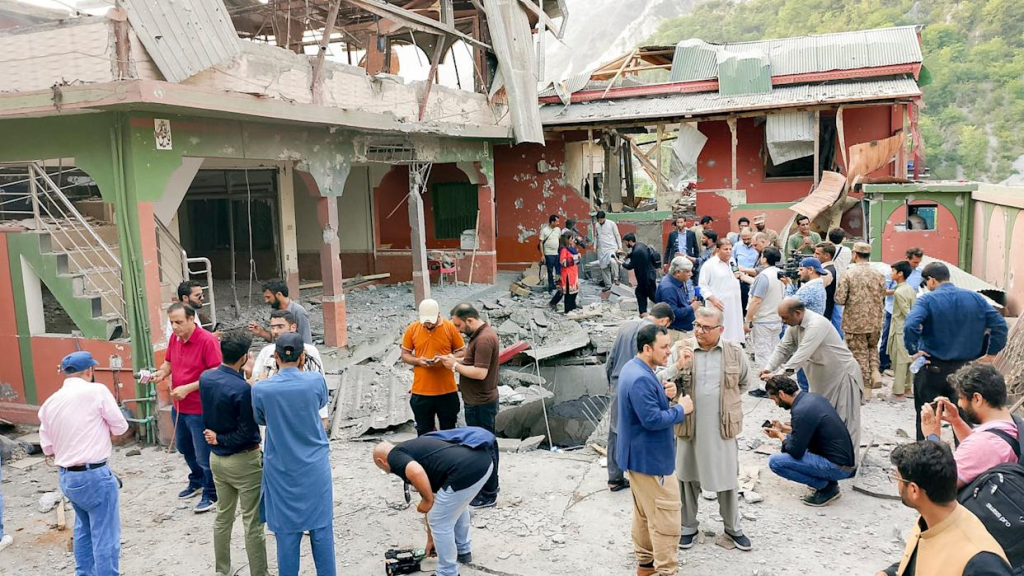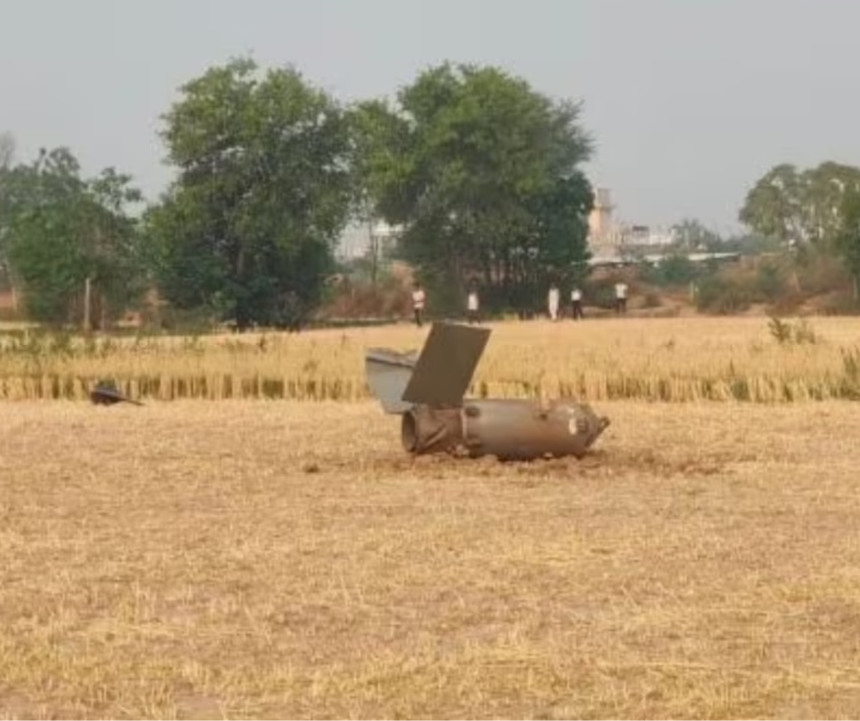Pakistan’s Alleged Air Strike Attempt Over Haryana: A Deep Dive Into What We Know
The Incident That Shook Northern India
Residents of the district sitting in Sirsa in Haryana had recounted hearing huge explosions, and then military air strike overhead. It could have been normal procedures, but it certainly turned very serious when authorities confirmed stopping and intercepting of an attempted aerial intrusion into India from Pakistan.
The incident created a whirl throughout border towns with security agencies activating emergency protocols. Several videos were posted on social media showing military vehicles racing towards the fields where suspicious debris was found. The timing of this incident is very crucial as only a few weeks back intelligence reports had warned about an increase in cross-border militant activity.

Eyewitnesses: The Night When All Lights Vanished
Rajesh Kumar, a farmer from Rania village, near the debris site, narrated the harrowing moments: “We heard something like thunder, but the sky was clear. Within minutes, the army jeeps entered the village commanding people to turn off all the lights and stay indoors.”
Similar reports were coming in from many villages in Sirsa district. The blackout orders covering Panchkula, Ambala, and Panipat were soon extended to Sirsa too as assessment of threat perception was underway. Local shopkeepers reported panic buying of candles and emergency supplies spreading with the rumors.
Military Response: Swift and Coordinated
Defense analysts highlight the rapid response as evidence of India’s improved aerial defense network:
- Integrated Air Command and Control System detected the incoming threat
- Surface-to-Air missile batteries were activated within minutes
- Sukhoi-30MKI fighters scrambled from nearby bases
A senior IAF officer, speaking on condition of anonymity, revealed that “the object was tracked from the moment it crossed into Indian air strike until its interception.” However, officials remain tight-lipped about whether it was destroyed mid-air or crashed after being targeted.
The Debris Mystery: What Exactly Was Intercepted?
Forensic teams have recovered multiple fragments from two separate sites near the Air Force Station. Preliminary analysis suggests:
- Metallic components consistent with unmanned aerial vehicles
- Electronic guidance systems of unknown origin
- No explosive warheads discovered so far
Aviation experts are divided on whether this was:
- A reconnaissance drone mapping sensitive installations
- A missile test that went awry
- A deliberate provocation timed with upcoming diplomatic talks
Blackout Protocols: More Than Just Lights Out
The district administration’s blackout orders involve comprehensive measures:
- Mobile network throttling in sensitive areas
- Radar-absorbing nets deployed over key installations
- Civilian vehicle movement restricted near military bases
“This isn’t just about turning off streetlights,” explained a home ministry official. “We’re creating an electronic and visual blackout to deny targeting data to any hostile elements.”
The Pakistan Factor: Denials and Deterrence
Islamabad has categorically denied involvement, calling the reports “baseless propaganda.” However, security analysts point to concerning patterns:
- Increased drone activity along Punjab border this month
- Unusual movements at Pakistan’s Sargodha airbase
- Recent statements from Pakistani military leadership about “new capabilities”
The incident comes exactly three years after the Balakot airstrike, raising questions about whether this represents an attempted retaliation.
Civilian Impact: Life in the Shadow of Conflict
For residents of border villages, the incident is a grim reminder of persistent tensions:
- Schools in a 50km radius have been closed indefinitely
- Night shifts at factories suspended
- Farmers advised to avoid fields after dark
“The last time we had blackouts was during the Kargil war,” recalled 68-year-old Surinder Kaur of Ellenabad. “We thought those days were behind us.”

What Happens Next?
As investigations continue, several critical questions remain:
- Will India pursue diplomatic or military responses?
- How will this affect ongoing ceasefire negotiations?
- What additional security measures will be implemented?
The Ministry of Defense has promised a detailed statement within 48 hours as forensic analysis concludes. Meanwhile, the air strike has placed all bases on “highest alert” status.
FAQs concerning the air strike incident that was reported in Sirsa, Haryana:
Q1: What occurred in Sirsa, Haryana?
A: The Indian air defense systems are being said to have intercepted and stopped an attempted aerial intrusion from Pakistan near Sirsa Air Force Station on [date] while debris believed to be from a missile or a drone was recovered from agricultural fields.
Q2: Have the Pakistanis taken responsibility for the incident?
A: So far Pakistan denies it. The Ministry of Defence in India is investigating where the object that was intercepted might have come from and will release a formal statement on the subject matter.
Q3: What security measures have been put in place?
A: The following security steps have been taken:
- Complete blackouts have been ordered in Sirsa, Panchkula, Ambala and Panipat
- All border airbases have been placed on high alert
- The installation of air-raid sirens in Haryana has been fast-tracked
- There has been an increase in chances of aerial surveillance patrols
Q4: Why were blackouts ordered?
A: The blackouts have three purposes:
- To disrupt any potential enemy surveillance
- To protect sensitive military establishments
- To cut down on the possibility of harming civilians
Q5: What evidence has been found so far?
A: Recovery teams have collected:
- Metallic debris with serial numbers
- Electronic guidance system components
- Possible propulsion system parts
Forensic analysis is ongoing.
READ MORE-India Thwarts Cross-Border Attacks: PM Modi Asserts National Preparedness Amid Escalation
A Nation on Edge: Balancing Vigilance and Normalcy
While authorities urge calm, the psychological impact is palpable. Psychologists report increased cases of anxiety in border communities, with many residents struggling to sleep since the incident.
Yet there’s also remarkable resilience. Local youth groups have organized neighborhood watches, while community kitchens ensure essential supplies reach those affected by the disruptions.
As the sun rises over Haryana’s wheat fields, life continues – but with an uneasy awareness that the skies above remain contested space. The coming days will reveal whether this incident marks a dangerous escalation or serves as a testament to India’s defensive capabilities.










